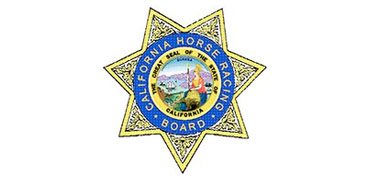From Bloodhorse.com
DEL MAR, Calif. (Nov. 21, 2019) — Dr. Greg Ferraro, a former racetrack veterinarian and former director of the University of California-Davis School of Veterinary Medicine Center for Equine Health, was elected chairman of the California Horse Racing Board during its monthly meeting Nov. 21 in Del Mar, Calif. He replaces Chuck Winner, who stepped down this summer.
His election, and that of Oscar Gonzales as vice chairman, were among the first items addressed by the board Thursday as its makeup shifts under the direction of California Gov. Gavin Newsom. Ferraro, Gonzales, and Wendy Mitchell were appointed to the CHRB by Newsom over the past year.
In an opening statement, Ferraro announced his intention to follow a mandate from the governor’s office to make the health and safety of horses the CHRB’s principal focus.
“I can tell you, in short, that the days of permissive medication are over,” he said. “We will gradually eliminate medications and keep them away from racing dates and training. That’s the goal. We expect opposition from some of these, but we are determined to carry them out in the best interests of horses and jockeys.”
California medication rules already are among the most stringent in the country. Many were adopted after the spike in equine fatalities at Santa Anita Park this winter and spring.
Later Thursday, commissioners authorized the upcoming winter/spring meeting at Santa Anita that begins Dec. 26, though they did so with stipulations, calling for track officials to update them with details of continued safety initiatives by early December. In addition to approving race dates, the CHRB has the regulatory power to suspend a race meeting.
Ferraro told track officials race-meet approval was contingent on Santa Anita not allowing racing or training over potentially unsafe tracks in inclement weather, a 30-day restriction on racing from horses receiving corticosteroid injections in their fetlocks, a 10-day restriction from training after such treatment, and the requirement of a $10,000 minimum claiming level at the track.
Aidan Butler, acting executive director of California racing operations for The Stronach Group, which operates Santa Anita, expressed his support for the measures.
The board also approved an amendment calling for continued education for trainers and assistant trainers to renew their licenses. Under the terms of the unanimously approved amendment, trainers and assistant trainers must complete 12 hours of approved coursework over a three-year period.
The CHRB delayed action until its Dec. 12 meeting regarding several agenda items, chief among them restrictions on the use of the riding crop by jockeys.
Gonzales first proposed the delay, explaining he felt it would be prudent to assess the direction of the newly created Thoroughbred Safety Coalition before taking action. His move was seconded by commissioner Alex Solis, a former jockey who voiced concerns about restrictions.
“In my 20 years of experience working in both state and federal government, I always feel it is important to better understand what we can do to better implement positive changes and to do our very best to make them uniform,” Gonzales said.
California already has one of the strictest policies on riding-crop use in the country. Jockeys are fined when striking their mounts more than three times in succession without an adequate response or when hitting their mounts when clearly out of contention.
Amid legal and regulatory questions, the board delayed action until Dec. 12 regarding a well-received proposal to require transfer of a claimed horse’s health information between affected parties.
Among the more contested issues Thursday was a Northern California dispute over race dates and stabling issues between Golden Gate Fields and Humboldt County Fair. That also was tabled until the next meeting.


